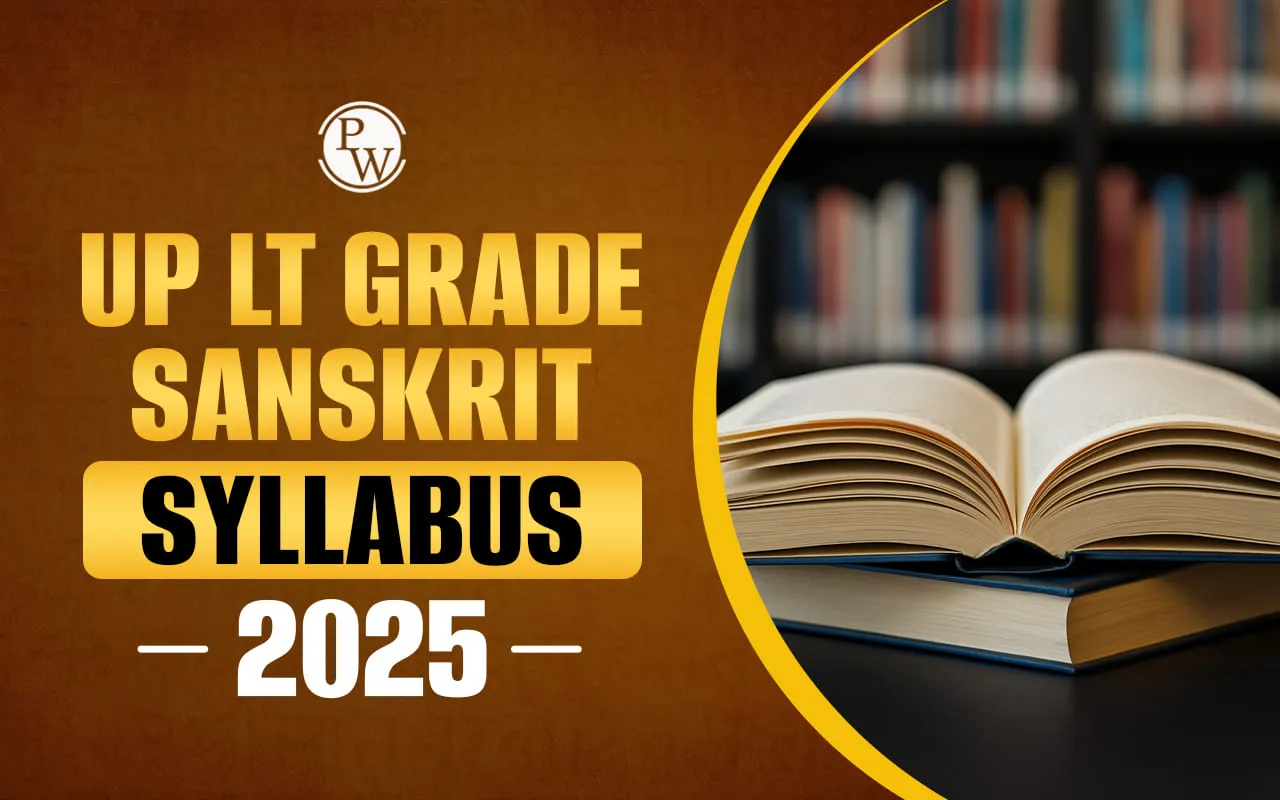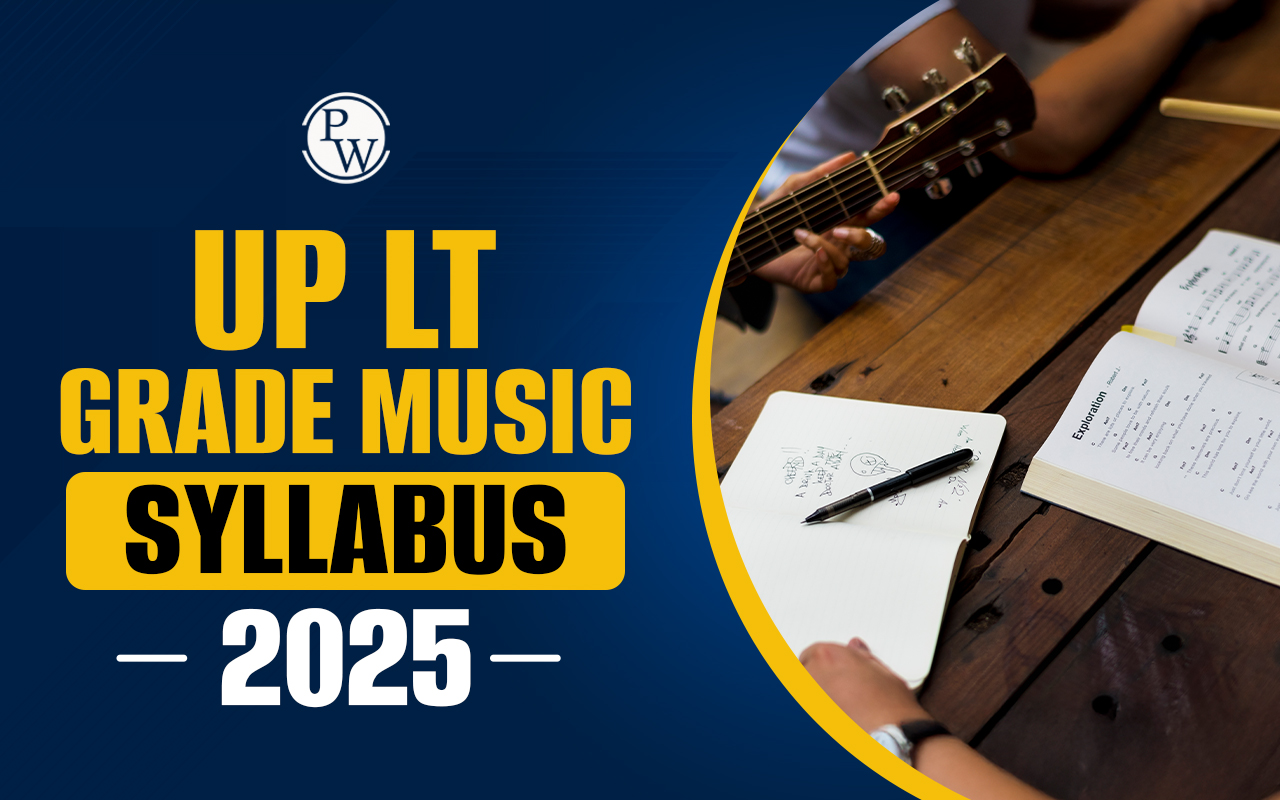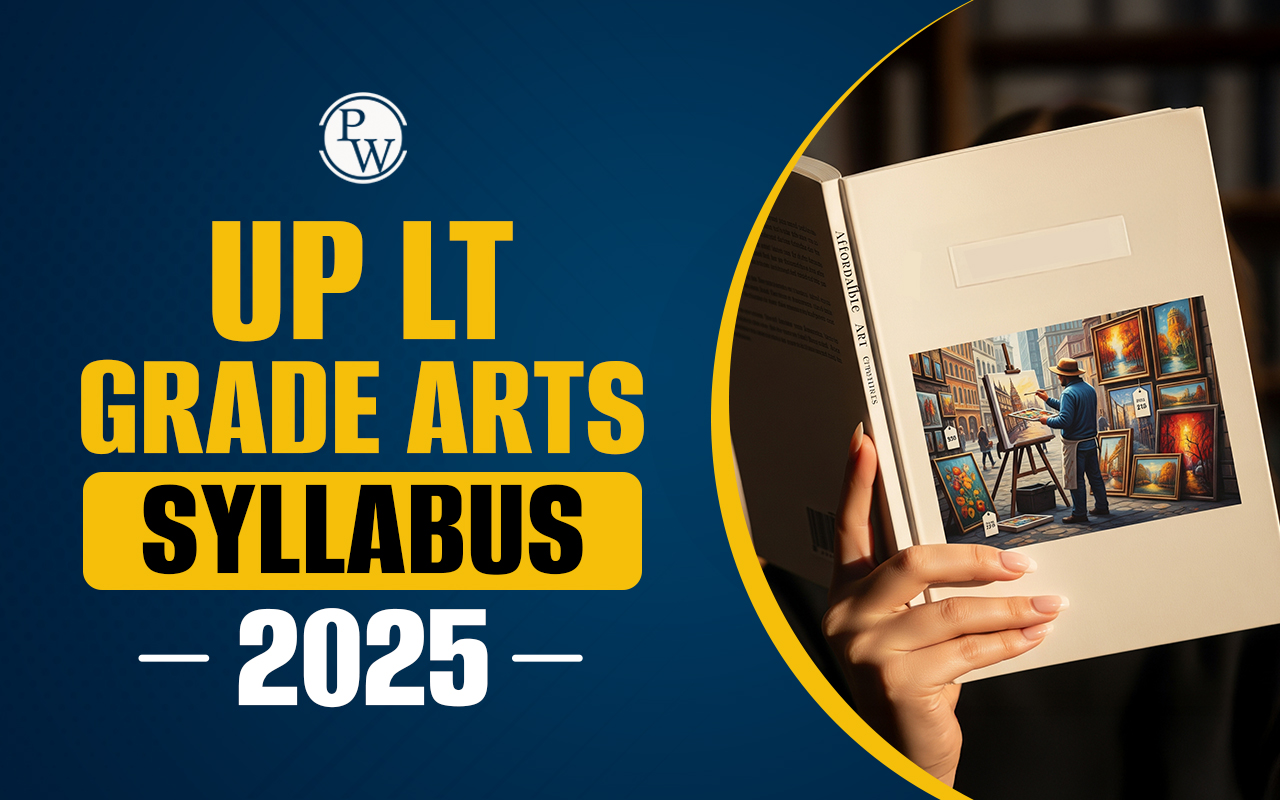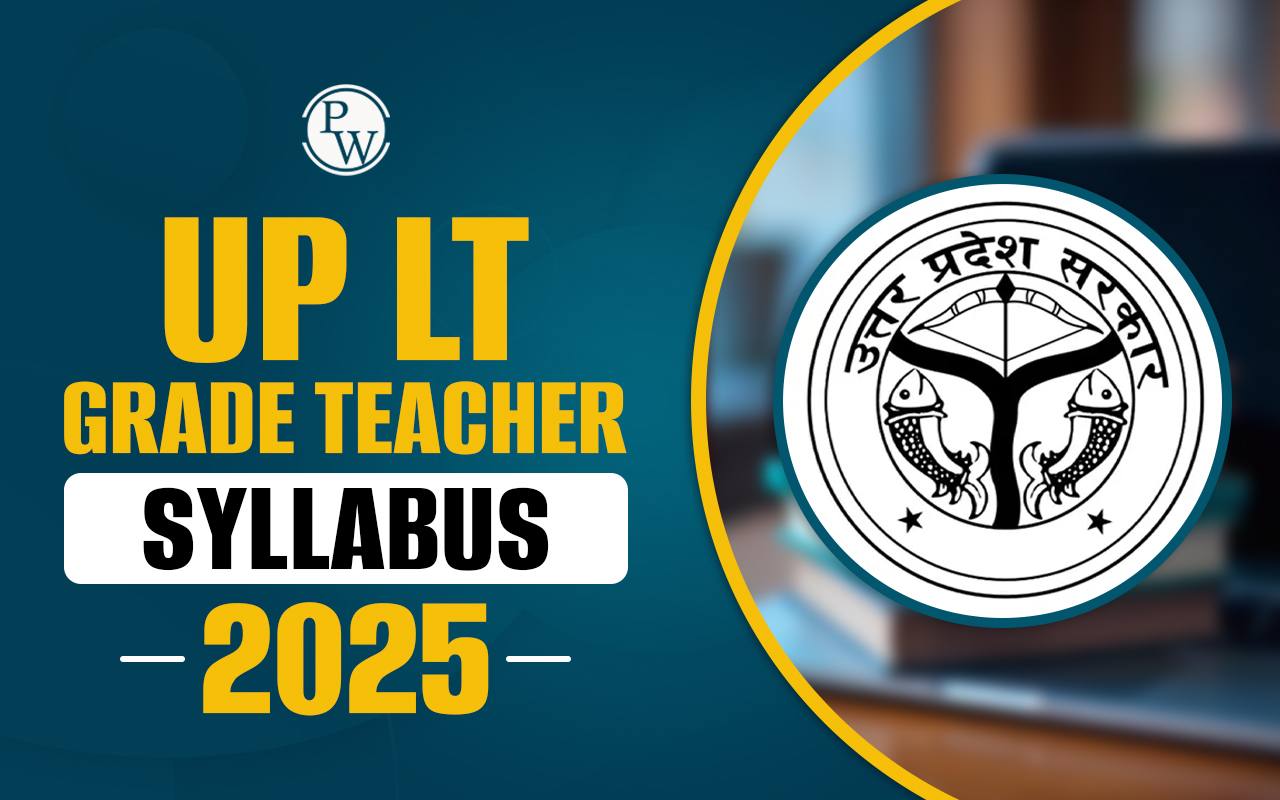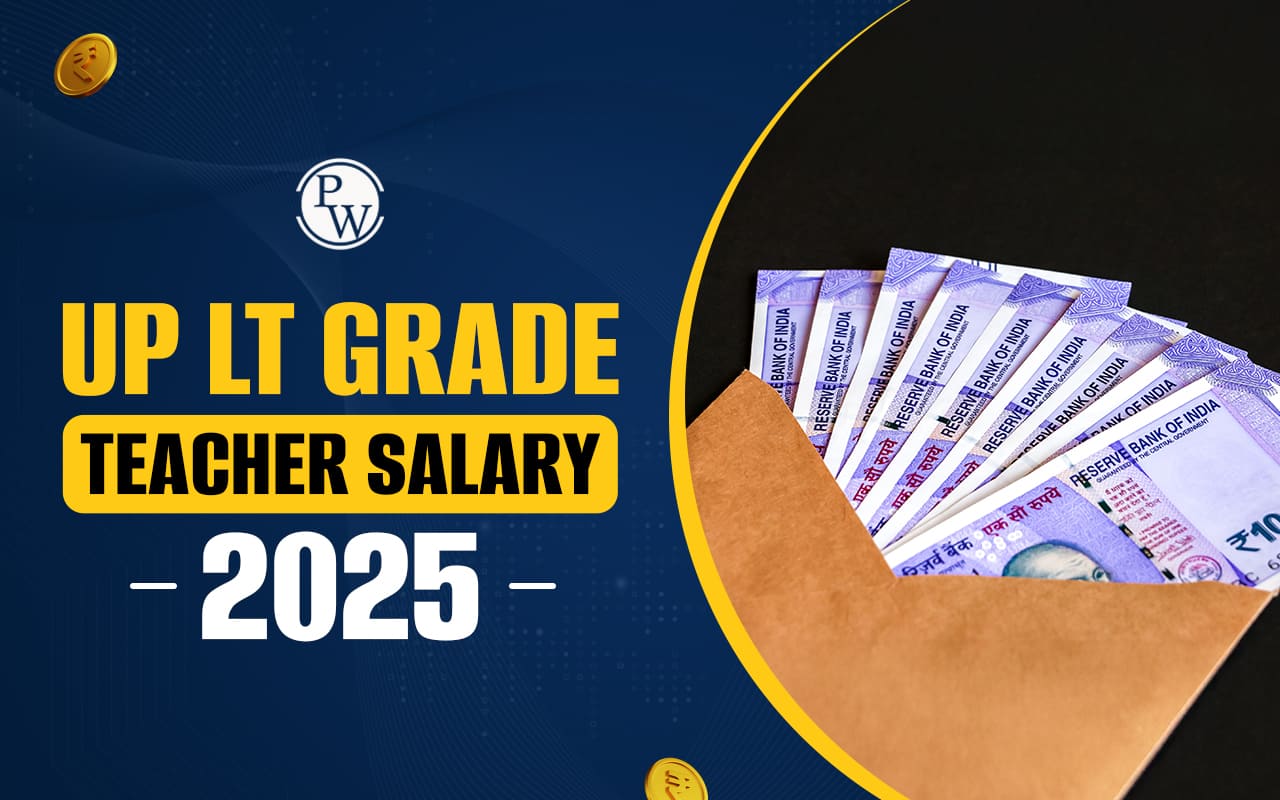
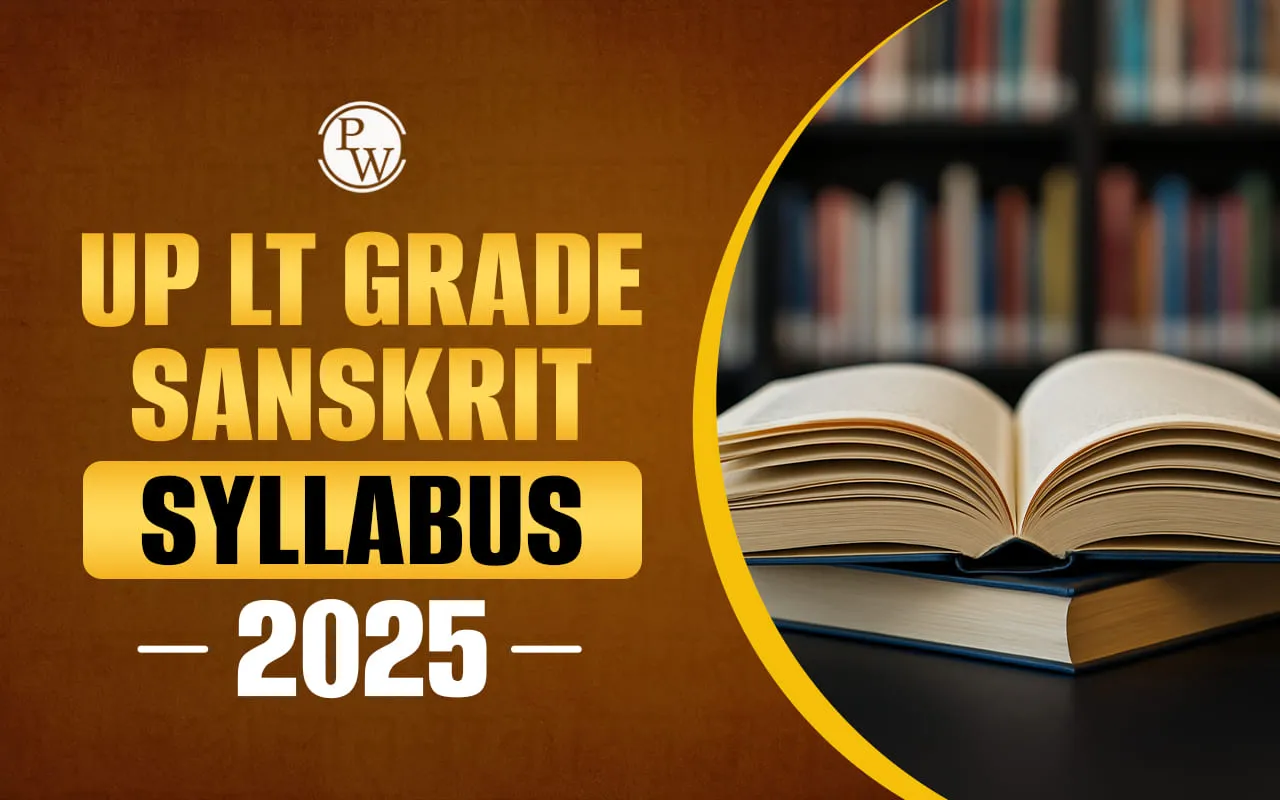
UP LT Grade Sanskrit Syllabus 2025: The UP LT Grade Sanskrit Syllabus 2025 covers graduation-level knowledge of the Sanskrit language, grammar, and literature. It includes topics such as Pratyahara (phonetic groupings), Karak (grammatical case relations), Pratyaroop (verb forms and conjugations), Shabd Roop (word formations and declensions), Sarvanuvan Shabd (word usage), and Adholikhit (sandhi rules and other phonetic principles).
UP LT Grade Sanskrit Syllabus 2025 Overview
UP LT Grade Teacher Recruitment 2025 contains the crucial information regarding the recuitment like eligibility, syllabus and exam pattern. Candidates can download the syllabus provided here. A quick overview of the UP LT Grade Sanskrit Syllabus 2025 is presented here-
| UP LT Grade Sanskrit Syllabus 2025 Overview | |
| Number of Posts | 7,466 |
| Exam Stages | Preliminary and Mains |
| Prelims Exam Type | Objective (MCQs) |
| Prelims Questions | 150 (30 General Studies + 120 Subject) |
| Prelims Marks | 150 marks |
| Prelims Duration | 2 hours |
| Prelims Negative Marks | 0.33 marks per wrong answer |
| Mains Exam Type | Descriptive (Short & Long Answers) |
| Qualifying Marks | 35% for SC/ST, 40% for others |
| Exam Mode | Offline (Pen and Paper) |
UP LT Grade Sanskrit Detailed Syllabus
The UP LT Grade Notification 2025 has been announced for aspiring candidates in Uttar Pradesh. Candidates can find the detailed syllabus below-
| UP LT Grade Sanskrit Detailed Syllabus | ||
| Syllabus Section | Topics / Subtopics Covered | Details |
| Sanskrit Literature | Classical prose, poetry, and drama | Includes famous works like Kādambarī (first part), Vikramorvaśīyam (first part), Śrīrāmacharitam (first chapter), Meghadūta (first part), Nīti Śatakam (first part), Abhijñāna Śākuntalam (fourth act), Uttararāmacaritam (third act) |
| Sanskrit Grammar | Sandhi (euphonic combinations), Samāsa (compound words), Karaka (case relations), and Sannantara (verb constructions) | Mastery over traditional grammar rules and their application |
| Sangya Roop (Noun forms) | Declensions of nouns ending in -a (akāranta), -i (ikāranta), -u (ukāranta), and -ṛ (ṛkāranta); masculine, feminine, and neuter genders | Understanding noun forms, usages, and their grammatical cases |
| Sarvanam Roop (Pronoun forms) | Different pronouns like sarva, tad, kim, yuṣmad, idam, asmad, etc. | Usage and forms of pronouns in Sanskrit grammar |
| Sanskrit Numbers (Sankhyā) | Numbers from 1 to 100 | Basic counting and usage of numbers in Sanskrit |
| Dhātu Roop (Verb forms) | Conjugation and forms of key roots such as bhū, gam, paṭh, dā, nam, kṛ, vṛt, kṛī, div, jan, dṛś, rakṣ, smṛ, duh | Verb root usage in different tenses and moods |
| Sanskrit Sayings and Maxims | Common Subhashitas (wise sayings), Nīti Vākya (moral statements) | Widely used Sanskrit proverbs and ethical expressions relevant for teaching |
| Sentence Transformation | Pad-parivartana (word change), Vritti-prakar (types of derivations and modifications) | Skills in transforming sentence structures and changing grammatical forms |
| Teaching Methodologies | Grammar teaching techniques, translation methods, and instructional strategies | Approaches for effectively teaching Sanskrit grammar and language |
| General Studies (Common Section) | Current Affairs, History, Polity, Geography, Economy, Environment, Science, Reasoning, Hindi & English Grammar (up to Class 10 level) | Tests general awareness and reasoning skills essential for LT Grade teacher roles |
UP LT Grade Sanskrit Syllabus PDF
The syllabus emphasizes mastery of traditional Sanskrit grammar, correct language usage, and understanding of classical texts. Alongside Sanskrit, candidates must also prepare for a General Studies section assessing current affairs, history, polity, geography, science, economy, environment, reasoning, and grammar at the Class 10 level, making the exam a balanced test of subject expertise and general awareness. Download the syllabus PDF from here by clicking the button given below.
UP LT Grade Sanskrit Exam Pattern
The UP LT Grade 2025 Exam Pattern consists of two stages: Preliminary and Mains. Here is an overview:
| UP LT Grade Sanskrit Exam Pattern | |||||
| Exam Stage | Question Type | No. of Questions | Marks | Duration | Negative Marking |
| Prelims | Objective (MCQ) | 150 (30 GS + 120 Sanskrit) | 300 | 2 hours | Yes, 0.33 per wrong |
| Mains | Descriptive | 20 (10 short + 10 long) | 200 | 3 hours | No |
